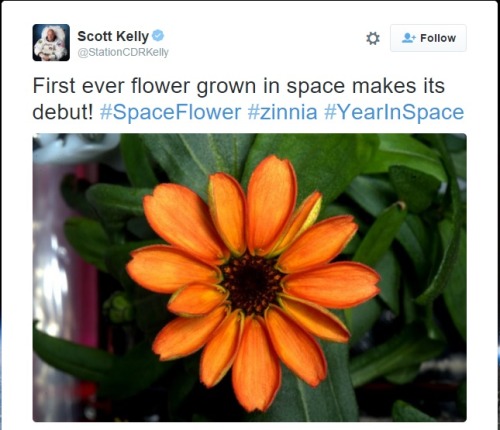Neptune And Its Moons (Proteus, Larissa, Despina And Galatea)
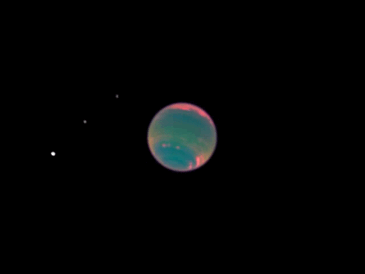
Neptune and its moons (Proteus, Larissa, Despina and Galatea)
Credit: NASA / Hubble (infrared)
More Posts from Maevetheeuropan and Others
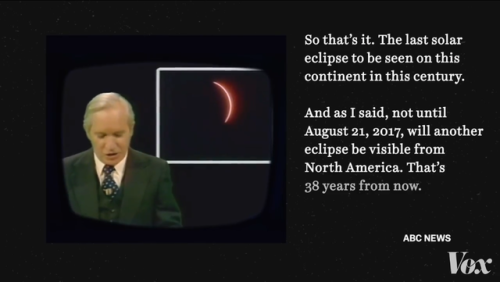
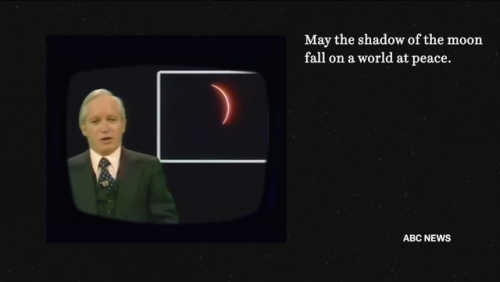
Hearing: Next Steps to Mars: Deep Space Habitats
Subcommittee on Space (114th Congress) Next Steps to Mars: Deep Space Habitats
How Do You Stay Fit on a Mission to Mars?
This mini exercise device could be the key!
Onboard the International Space Station, astronauts need to work out to maintain their bone density and muscle mass, usually exercising 2 hours every single day. Throughout the week, they exercise on three different pieces of equipment–a bike, a treadmill and the Advanced Restive Exercise Device (ARED).

All these devices are needed to keep an astronaut healthy.
However, deep-space vehicles like our Orion Spacecraft aren’t as roomy as station, so everything — including exercise equipment — needs to be downsized. The Miniature Exercise Device (MED-2) is getting us one step closer to being able to keep astronauts’ bodies healthy on long journeys to the moon, Mars and beyond.

MED-2 is a compact, all-in-one exercise device that we developed and will be launching to the space station Tuesday, March 22. Onboard the station, we’ll see how MED-2 will perform in microgravity and how it will need to be further adapted for our Journey to Mars. However, it’s already pretty well equipped for deep space missions.
So what makes MED-2 so great for deep space travel and our Journey to Mars?
1. It is an all-in-one exercise device, meaning it can do both aerobic and resistive workouts. When we go to Mars, the less equipment we need, the better.

2. It’s incredibly light. The MED-2 weighs only 65 pounds, and every pound counts during space missions.

3. It has 5 - 350 pounds of resistance, despite weighing only 65 pounds. Astronauts don’t all lift the same amount, making the flexibility in MED-2’s “weights” essential.

4. It’s tiny. (Hence its name Miniature Exercise Device.) Not only is MED-2 incredibly light, but it also won’t take up a lot of space on any craft.

5. It powers itself. During an aerobic workout, the device charges, and then that power is used to run the resistive exercises. When traveling to space, it’s good when nothing goes to waste, and now astronauts’ workouts will help power the Journey to Mars.

MED-2 is only one of many devices and experiments flying on Orbital ATK’s Cygnus spacecraft. To find out more about the science on the space station, follow @ISS_Research and @Space_Station on Twitter.
Make sure to follow us on Tumblr for your regular dose of space: http://nasa.tumblr.com

NASA scientists have reported that they’ve successfully tested an engine called the electromagnetic propulsion drive, or the EM Drive, in a vacuum that replicates space. The EM Drive experimental system could take humans to Mars in just 70 days without the need for rocket fuel, and it’s no exaggeration to say that this could change everything.
But before we get too excited (who are we kidding, we’re already freaking out), it’s important to note that these results haven’t been replicated or verified by peer review, so there’s a chance there’s been some kind of error. But so far, despite a thorough attempt to poke holes in the results, the engine seems to hold up.
Continue Reading.
Solar System: Things to Know This Week
Almost every day, we receive a message from a spacecraft more than 10.6 billion miles (about 17 billion km) away.
At that unimaginable distance, it takes the radio signal almost 16 hours to arrive. The spacecraft is Voyager 2, which launched 40 years ago this month. It’s still operating, sending back dispatches from the dark reaches well beyond the orbit of Pluto. Even now, scientists are still actively exploring the outer boundaries of the solar system using Voyager 2, decades after its “Grand Tour” of the giant planets Jupiter, Saturn, Uranus and Neptune revealed their splendors like never before. This week, we recall 10 highlights from one of the most epic voyages in human history.
1. A Journey of 10 Billion Miles Begins With the First Step

Voyager 2 set out from Earth on Aug. 20, 1977. Even though it launched before its twin spacecraft, Voyager 1, it carried the ‘2’ moniker because mission planners knew its trajectory would bring it to Jupiter after Voyager 1’s arrival there.
2. The Grand Tour
Voyager 2’s trajectory was special because it took advantage of a rare orbital alignment to fly by all four gas giant planets: Jupiter, Saturn, Uranus and Neptune. It was the first, and so far the only, spacecraft to carry out a close-up reconnaissance of Uranus and Neptune.
3. Not-So-Gentle Giant
Voyager 2 flew by Jupiter in April 1979, capturing striking images of the planet’s volcanic moon Io and its violent storms larger than the entire Earth.
4. Saturn’s Not the Only One

Jupiter has its own ring system, and Voyager 2 provided the first pictures.
5. An Ocean Under Ice
During its Jupiter encounter, Voyager 2 obtained close-up looks at Jupiter’s moon Europa, including linear cracks and other features which first led scientists to realize Europa probably hides a vast sea of liquid water beneath an icy shell, the first known world outside Earth that could have an ocean.
6. Ringworld, the Prequel
Voyager 2 zoomed through the Saturn system in August 1981. It saw hints of mysterious features that the Cassini mission would later reveal in stunning detail, including Enceladus, with its bright surface that suggested geologic activity, and Saturn’s intriguing hexagonal jet stream.
7. Swiftly by a Tilted Planet
In January 1984, Voyager offered humanity its first detailed look at the seventh planet, Uranus, the only one tilted on its side relative to the Sun. Voyager images revealed 11 new moons, including Juliet, Puck, Cressida, Rosalind and Ophelia. The moon Miranda presented a bizarre landscape that left scientists debating its origins for years. Voyager also captured views of the planet’s lacy rings, and found that it is the coldest in the solar system, at minus 353 degrees Fahrenheit (59 Kelvin).
8. In Neptune’s Blue Realm

After picking up a gravitational speed boost at each previous planetary encounter, by the time Voyager reached Neptune it shot through the entire system of Neptunian rings and moons in a matter of hours. Voyager saw a titanic storm in Neptune’s windy atmosphere, discovered new moons, and revealed active geysers erupting on Triton’s frigid surface.
9. Postcards From the Edge
Although their cameras are no longer functioning, other key scientific instruments on board both Voyager spacecraft are still collecting data. Voyager 1 is exploring the boundary between the Sun’s realm and interstellar space. Voyager 2 hasn’t traveled quite as far. In September 2007, it crossed the termination shock (where the speed of the solar wind of charged particles drops below the speed of sound) at a point about 84 Astronomical Units from the Sun (more than twice the distance to Pluto). See https://go.nasa.gov/2uwrndb
10. Ride Along
Voyager’s mission is far from over. Engineers estimate the spacecraft will have enough power to operate into the mid-2020s. You can ride along at www.jpl.nasa.gov/voyager, or by following @NASAVoyager on Twitter and by downloading our free 3-D space simulation software, Eyes on the Solar System at eyes.nasa.gov.

One more thing: Inspired by the messages of goodwill carried on Voyager’s Golden Record, you’re invited to send a short, uplifting message to Voyager and all that lies beyond it via social media. With input from the Voyager team and a public vote, one of these messages will be selected for us to beam into interstellar space on Sept. 5, 2017—the 40th anniversary of Voyager 1’s launch. Post your message on social media with the tag #MessageToVoyager by Aug 15. Details: www.jpl.nasa.gov/voyager/message/
Make sure to follow us on Tumblr for your regular dose of space: http://nasa.tumblr.com

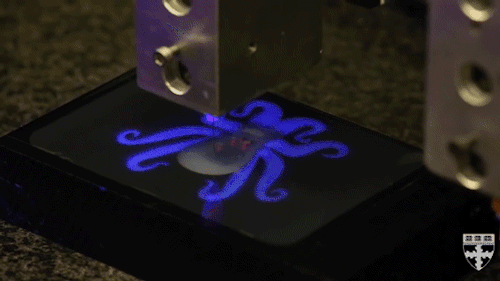
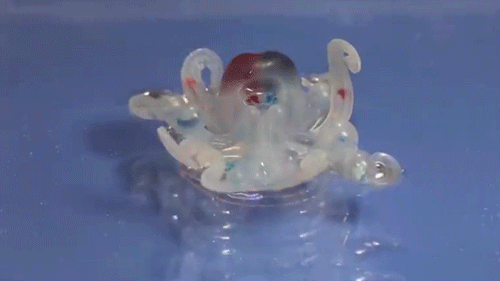
Creepy or adorable? Researchers at Harvard University have demonstrated the first autonomous, untethered, entirely soft robot: the octobot.
Instead of being controlled by electronics, the robot’s logic board is powered by chemical reactions and fluid passing along tiny channels. Scientist have struggled to create completely soft robots because rigid components like circuit boards, power sources and electronic controls are difficult to replace.
Learn more about the octobot and soft robotics here and see the full study published in Nature here.
Videos Credit: Harvard SEAS/Image Credit Lori Sanders

NASA Wants Deep Space Habitat Ideas
How will humans live on Mars? Well, NASA’s not really sure yet, but if you’ve got any ideas you can submit them now. The agency has just put out a call for proposals for “deep space habitation prototypes.”
from NASA’s press release:
NASA is soliciting proposals for the development of prototypes for deep space habitats that will give astronauts a place to call home during long-duration missions supporting the agency’s Journey to Mars.
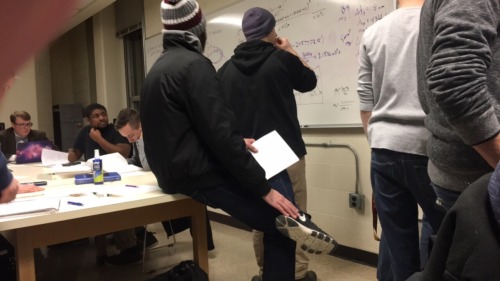
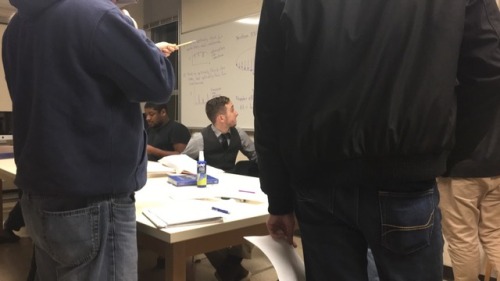
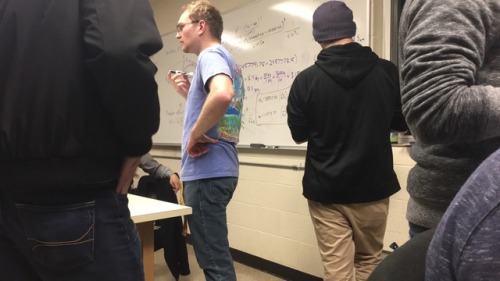
The beautiful chaos of watching 12 frantic astrophysics students try to save a theoretical astronaut from falling into a black hole. I’ve never seen a group of people work so quickly and efficiently before.








Very strange things happen to your body if you spend a year in space
NASA Astronaut Scott Kelly returns to Earth Tuesday night after spending almost a year in space.
But his 340 days aboard the International Space Station (ISS) haven’t been all fun and games.
Our bodies evolved on Earth, so they’re not built for weightlessness — which is exactly why NASA plans to use Kelly to study the long-term effects of spaceflight the human body.
-
 leextacy reblogged this · 3 weeks ago
leextacy reblogged this · 3 weeks ago -
 writer-unblocked reblogged this · 3 weeks ago
writer-unblocked reblogged this · 3 weeks ago -
 pararrayos reblogged this · 3 weeks ago
pararrayos reblogged this · 3 weeks ago -
 pararrayos liked this · 3 weeks ago
pararrayos liked this · 3 weeks ago -
 simply-sithel liked this · 1 month ago
simply-sithel liked this · 1 month ago -
 hunter-gatherer-stuff reblogged this · 1 month ago
hunter-gatherer-stuff reblogged this · 1 month ago -
 sunbeamsandmoonrays liked this · 1 month ago
sunbeamsandmoonrays liked this · 1 month ago -
 g33kmama liked this · 1 month ago
g33kmama liked this · 1 month ago -
 lurker-no-more reblogged this · 1 month ago
lurker-no-more reblogged this · 1 month ago -
 cat-in-a-fedora liked this · 1 month ago
cat-in-a-fedora liked this · 1 month ago -
 shapeshifting-entity liked this · 1 month ago
shapeshifting-entity liked this · 1 month ago -
 sunbeacon reblogged this · 1 month ago
sunbeacon reblogged this · 1 month ago -
 annakin14 reblogged this · 1 month ago
annakin14 reblogged this · 1 month ago -
 annakin14 liked this · 1 month ago
annakin14 liked this · 1 month ago -
 whipsybask reblogged this · 1 month ago
whipsybask reblogged this · 1 month ago -
 lurker-no-more liked this · 1 month ago
lurker-no-more liked this · 1 month ago -
 gorgona-chingona liked this · 1 month ago
gorgona-chingona liked this · 1 month ago -
 floggingink reblogged this · 1 month ago
floggingink reblogged this · 1 month ago -
 sansakarstark reblogged this · 1 month ago
sansakarstark reblogged this · 1 month ago -
 malvarmenta reblogged this · 1 month ago
malvarmenta reblogged this · 1 month ago -
 lakeshirtsecurity liked this · 1 month ago
lakeshirtsecurity liked this · 1 month ago -
 mukeclemmings16 liked this · 1 month ago
mukeclemmings16 liked this · 1 month ago -
 lobinhasolitaria reblogged this · 1 month ago
lobinhasolitaria reblogged this · 1 month ago -
 catlizard liked this · 1 month ago
catlizard liked this · 1 month ago -
 catlizard reblogged this · 1 month ago
catlizard reblogged this · 1 month ago -
 captainquixotic liked this · 1 month ago
captainquixotic liked this · 1 month ago -
 lovecore liked this · 1 month ago
lovecore liked this · 1 month ago -
 cristinaricci reblogged this · 1 month ago
cristinaricci reblogged this · 1 month ago -
 planet-sb0 reblogged this · 1 month ago
planet-sb0 reblogged this · 1 month ago -
 2oowicky liked this · 2 months ago
2oowicky liked this · 2 months ago -
 caaasaaa liked this · 2 months ago
caaasaaa liked this · 2 months ago -
 gods-bath-room-floor reblogged this · 2 months ago
gods-bath-room-floor reblogged this · 2 months ago -
 thatswhatheavenfeelslike reblogged this · 2 months ago
thatswhatheavenfeelslike reblogged this · 2 months ago -
 takingbacklucas reblogged this · 2 months ago
takingbacklucas reblogged this · 2 months ago -
 glitterbuggalaxy reblogged this · 2 months ago
glitterbuggalaxy reblogged this · 2 months ago -
 fetchbender liked this · 2 months ago
fetchbender liked this · 2 months ago -
 eluebo liked this · 2 months ago
eluebo liked this · 2 months ago -
 space-phase reblogged this · 2 months ago
space-phase reblogged this · 2 months ago -
 jockoppressor liked this · 2 months ago
jockoppressor liked this · 2 months ago -
 leafrose-santurn reblogged this · 2 months ago
leafrose-santurn reblogged this · 2 months ago -
 vandroid-helsing reblogged this · 2 months ago
vandroid-helsing reblogged this · 2 months ago -
 reckoningg liked this · 2 months ago
reckoningg liked this · 2 months ago -
 bienpaseado reblogged this · 2 months ago
bienpaseado reblogged this · 2 months ago -
 keybladesandbowties reblogged this · 2 months ago
keybladesandbowties reblogged this · 2 months ago -
 chephboi-r-d liked this · 2 months ago
chephboi-r-d liked this · 2 months ago -
 blessed111 reblogged this · 2 months ago
blessed111 reblogged this · 2 months ago
